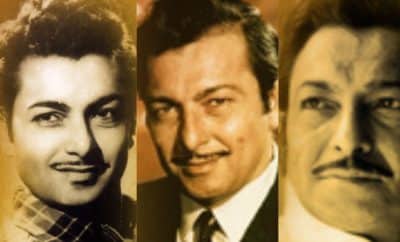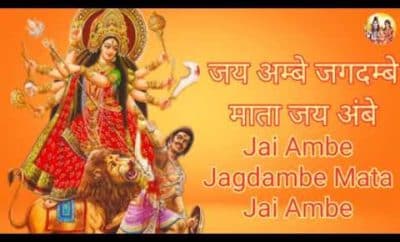Legends
Balraj Sahni and Manna Dey – When the Two Legends Come Together
Hindi cinema, which has become an inseparable part of Indian culture now, has gone through various stages; due to ever-evolving technology and changes in social and personal dynamics. The period from the late 1940s to the 1970s, which also coincided with the golden era of Hindi Film Music (HFM), was an important stage in this journey (we may call this the second-generation Hindi cinema). The classic works spanning across genres by the stalwarts of Hindi cinema was an important feature of this period. Due to the offbeat subjects chosen by a few stalwarts, many talented actors who were not the conventional her-heroine material also came to the fore in the second-generation Hindi cinema.
Balraj Sahni is one such prominent and respected name. Balraj Sahni has left an indelible imprint through all his roles – whether as a protagonist or a supporting actor. Born as Yudhishthir Sahni on 1 May 1913, he was forced by his father into the family business after completing post-graduation in English literature. Due to his lack of interest in the business, he started working as a teacher in Ravindranath Tagore’s Shantiniketan together with his wife in the late 1930s. From 1940 to 1944, he worked in London for BBC radio, where he relayed Hindi plays and interviews. After returning to India, he started pursuing his passion for acting through the plays of the Indian People’s Theatre Association (IPTA). He appeared on screen for the first time in Phani Majumdar’s Insaaf (1946), followed by K.A. Abbas’ Dharti Ke Lal (1946) (in which he played the lead alongside his wife Damayanti) and Door Chalein (1946). He appeared in several films thereafter without being much noticed and also wrote the screenplay and dialogues for Gurudutt’s directorial debut Baazi (1951), until he got his foothold in Hindi cinema with Bimal Roy’s classic Do Bigha Zamin (1953). His strength as an actor got a recognition through the film and he never looked back thereafter. He played many memorable roles mainly in the 1950s in the films like Seema (1955), Kathputli (1957), Bhabhi (1957), Lajwanti (1958) and Sone Ki Chidiya (1958). His remarkable films in the 1960s include Anuradha (1960), Bhabhi Ki Chudiyan (1961), Kabuliwala (1961), Haqeeqat (1964), Waqt (1965) and Ek Phool Do Mali (1969). Who can forget his performance in the legendary and evergreen song Aye meri zohrajabeen from Waqt (1965)?
His role of the angst ridden, but stoic Muslim man who refuses to go to Pakistan during partition, in his last film Garm Hawa (1973), is arguably his best performance. However, he breathed his last soon after the dubbing work of the film was completed and could not see the completed film.
Besides being an accomplished actor, he was also a gifted writer and poet.
Another important feature of the second-generation Hindi cinema was the full-fledged evolution of playback using the voices of persons other than actors; and change in the music trend with music from not only various regions of India but also various other countries making its way into HFM. A separate class of artistes, viz. playback singers, also came into being with this kind of playback technique.
Manna Dey was a prominent name in the battery of the golden era playback singers, besides the big-four. Born as Prabodh Chandra Dey on 1 May 1919 in the then Calcutta, Manna Dey got music lessons from his uncle and renowned music director, singer and actor Krishna Chandra Dey (popular as K.C. Dey) and some other classical vocalists. He started his career in HFM in 1942 as an assistant music director under K.C. Dey. Later, he also worked as a playback singer, an independent music director and assistant to S.D. Burman, until he rose to fame with the song Upar Gagan Vishal (Mashaal – 1950) composed by S.D. Burman. Due to the astounding vocal acrobatics in classical singing, he became the first choice of almost every composer for singing classical songs. He also had a stupefying ability to sing comedy songs with a lot of zeal and energy. Though he carved out a niche for himself in the form of classical and comedy songs, his association with the composer duo Shankar-Jaikishan, mainly in Raj Kapoor movies, gave him an opportunity to display his capability as a romantic singer too. He gave a different dimension to romantic rendition by male singers through the songs like Pyar hua iqrar hua hai (Shree 420 – 1955) and Ye raat bheegi bheegi (Chori Chori – 1956).
Manna Dey was rarely seen lending voice to a hero (except Raj Kapoor and a few others), but due to the maturity of voice, he was almost the single voice of a respected or senior role on the screen, including Balraj Sahni. Let us have a fleeting glance at a few memorable songs that their combination has given us.
1. Aye Meri Zohrajabeen (Waqt – 1965)
Though this is not their first song in combination chronologically, this deserves the first mention in the list due to its everlasting charisma, so much so that it is popular even with the current generation. The song is composed by Ravi and penned by Sahir Ludhianvi.
https://www.youtube.com/watch?v=Zm7vxgjrRAU
2. Dharti Kahe Pukar Ke (Do Bigha Zamin – 1953)
This melodious song composed by Salil Chowdhury, rendered by Manna Dey and Lata Mangeshkar and filmed on the protagonist Balraj Sahni in the Bimal Roy classic Do Bigha Zamin (1953) motivates the protagonist to do something that would leave his permanent mark and make his story immortal. Though Balraj Sahni does not mime the song, it shows his journey leading to a big transition and acts as a motivation for him. The song is beautifully penned by Shailendra.
The tune of the line “Mausam beeta jaye” is based on a line from the famous Russian Red Army March Song Polyushka Polye.
3. Tu Pyar Ka Sagar Hai (Seema – 1955)
This is a soulful prayer composed by Shankar-Jaikishan and written in touching words by Shailendra. It is filmed on Ashok, the compassionate manager of an orphanage (played by Balraj Sahni), who prays the God for clearing the chaos in human minds and guiding them to the appropriate path eventually leading to Him.
4. Aye Mere Pyare Watan (Kabuliwala – 1961)
Well, who does not know this song, which has been an epitome of patriotism in India for decades? The words of Prem Dhawan, sure to arouse patriotism in anyone’s mind, are woven by Salil Chowdhury in a haunting and soul stirring tune. Though Balraj Sahni does not mime the song, it portrays the feelings of all the Pathans (including him) who have migrated from Kabul to Kolkata to earn money and are missing their motherland.
5. Tujhe Suraj Kahoon Ya Chanda (Ek Phool Do Mali – 1969)
This beautiful song composed by Ravi and penned by Prem Dhawan expresses the joy of a middle-aged rich businessman, who has been yearning for a child of his own and has got one by accident, albeit as a foster father.
Hope you enjoyed the glimpse of the outstanding work of the two legends who were born on the same day and a few of their wonderful songs together.




Rajan Nebhnani
May 1, 2021 at 7:36 am
बहुत सुंदर ???
Virender Gupta
May 1, 2021 at 7:40 am
Beautifully written Yogesh ??